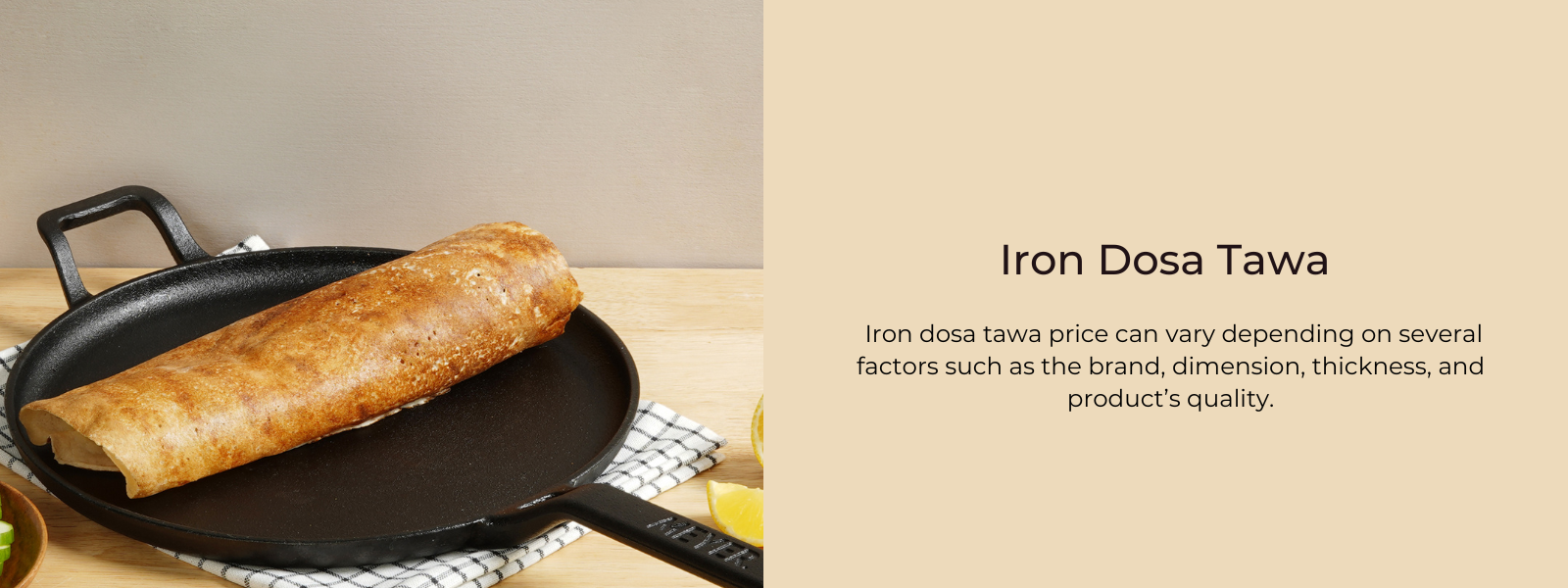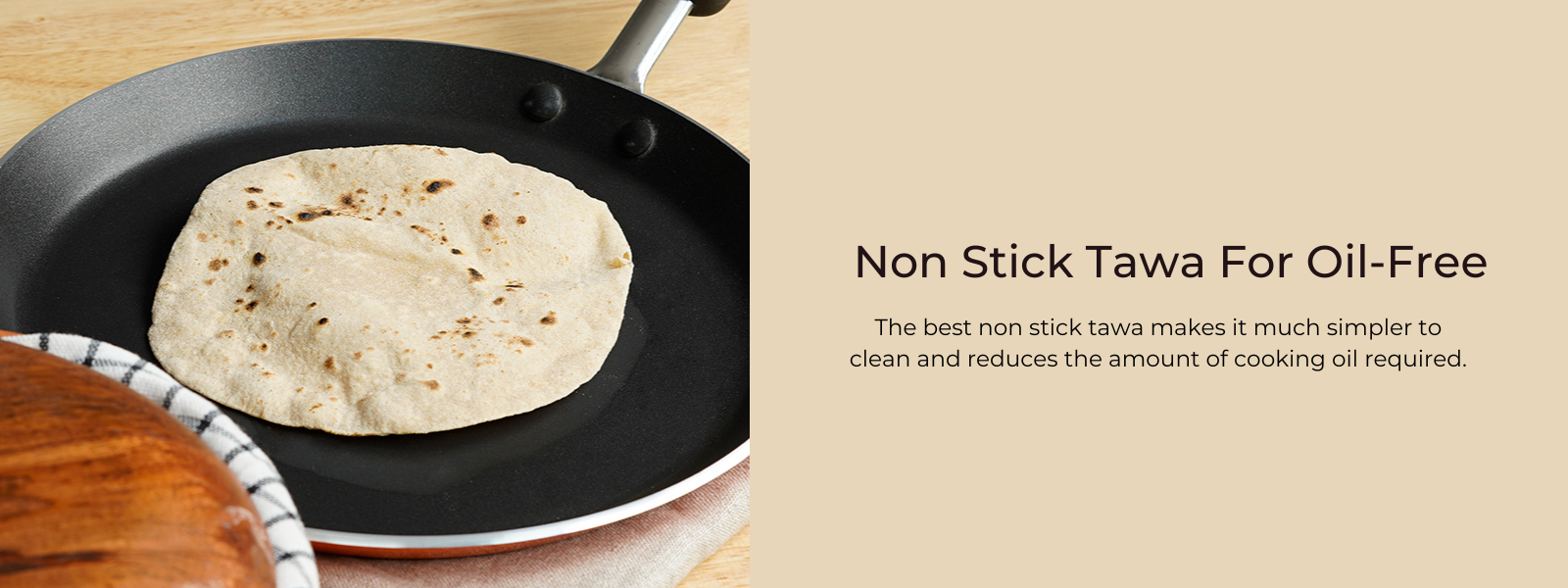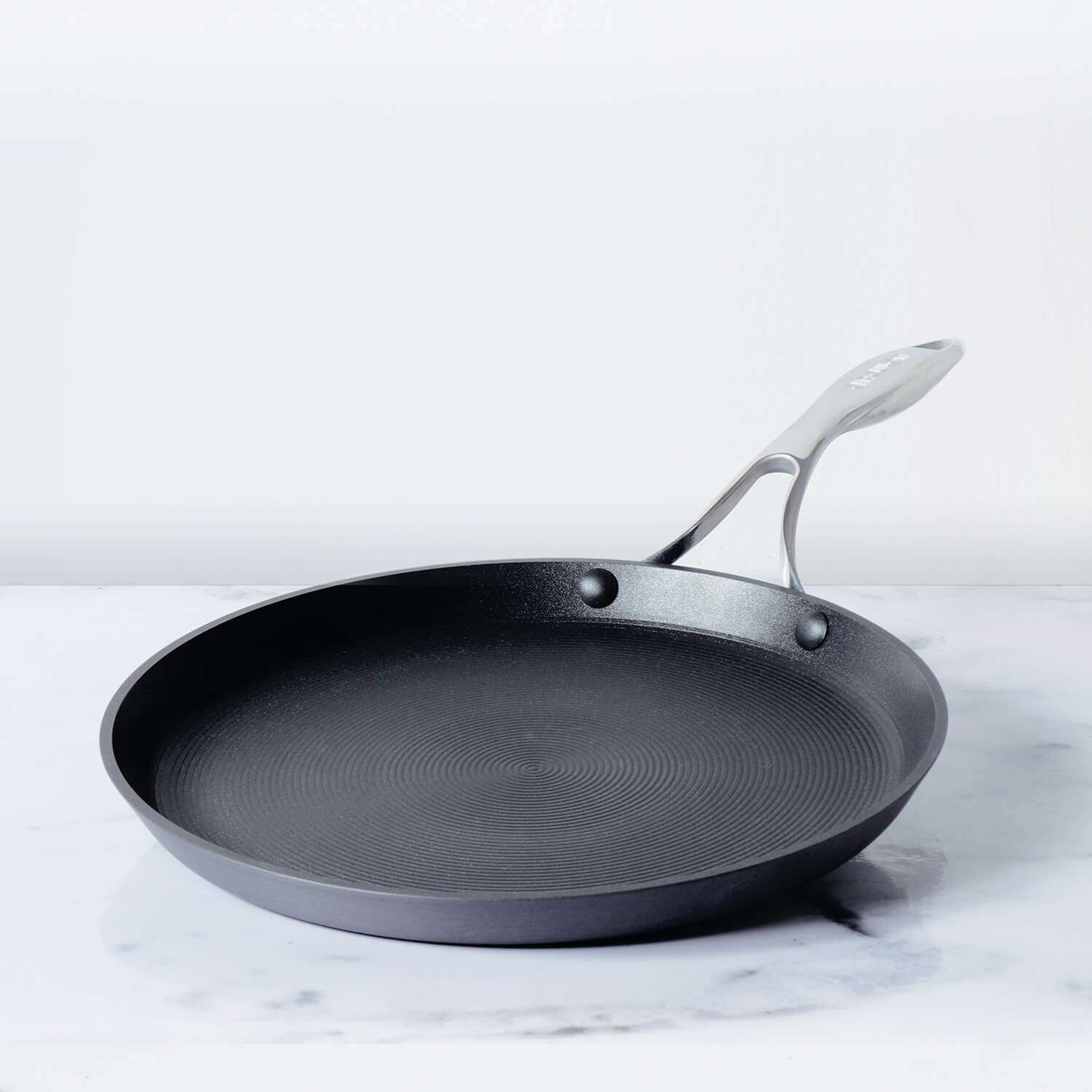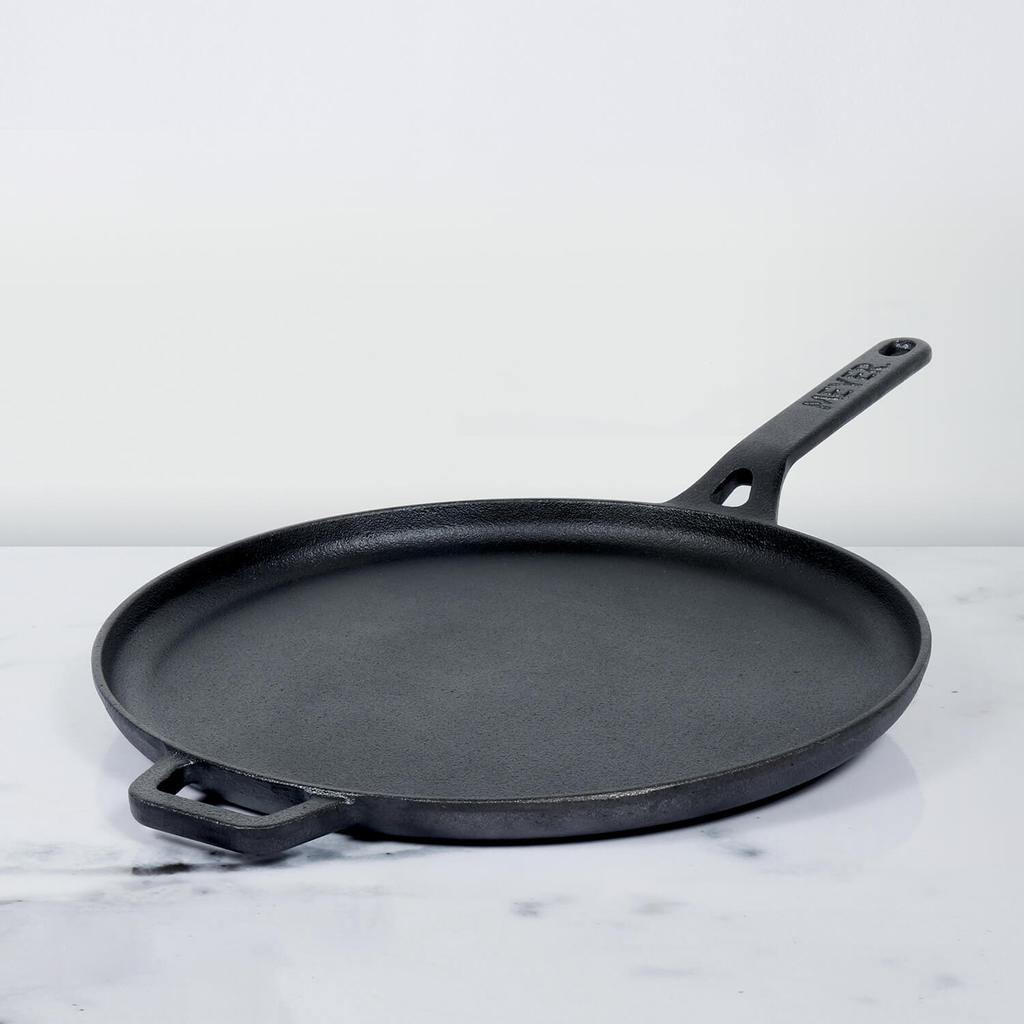A dosa fry pan is an essential tool for making dosas, the beloved South Indian delicacy. Dosa making is an art that requires precision and the right equipment, and the dosa fry pan is purpose-built to achieve the perfect dosa texture – thin, crispy, and evenly cooked.
Whether you're a seasoned dosa enthusiast or a beginner eager to explore the world of dosa making, a dosa fry pan is an indispensable tool that streamlines the process and ensures your dosas turn out perfectly every time. It's a worthy investment for anyone who appreciates the art of South Indian cuisine.
Table of Contents
Difference Between Dosa Fry Pan And Dosa Tawa Pan:
The terms "dosa fry pan" and "dosa tawa pan" are often used interchangeably to describe a pan specifically designed for making dosas, the thin and crispy South Indian crepes. However, there might be some variations in design and materials depending on the manufacturer and the region. Here are a few differences you might encounter:
- Terminology: The main difference is in the terminology itself. "Dosa fry pan" might emphasize the pan's use for frying dosas, while "dosa tawa pan" highlights its resemblance to a traditional tawa used in Indian cooking.
- Design: Some dosa tawas or pans have slightly raised edges to contain the dosa batter and prevent it from spilling over. Others might have a completely flat surface without raised edges.
- Material: Both dosa fry pans and dosa tawa pans can be made from various materials, such as cast iron, non-stick coated aluminum, and hard-anodized aluminum. The material might impact factors like heat retention, cooking surface, and maintenance.
- Size: The size of the pan can vary, with some having a larger diameter to accommodate the dosa batter's spread.
In many cases, the differences might be subtle, and the choice between a dosa fry pan and a dosa tawa pan might come down to personal preference, availability, and the specific features you're looking for in your dosa-making experience. It's a good idea to consider your cooking preferences and needs when choosing the pan that suits you best.
Is It Essential To Have A Dosa Fry Pan?
While a dosa fry pan can certainly enhance the dosa-making process, it's not an absolute necessity to prepare this beloved South Indian delicacy. Dosa-making can be accomplished using a regular flat griddle or frying pan, adapting your technique to suit the tools you have at hand. However, a specialized dosa fry pan offers advantages such as even heat distribution, a smooth surface for thin dosas, and a larger diameter for easy spreading. While its benefits contribute to achieving the ideal dosa texture, if you're exploring dosa-making for the first time or wish to embrace authenticity, a dosa fry pan can be a valuable addition. Nonetheless, the heartwarming essence of dosas can be created using the utensils available in your kitchen.
Cultural Significance Of Dosa Fry Pan:
The dosa fry pan, or dosa tawa, holds cultural significance rooted in Indian culinary traditions, particularly in South India. Beyond its functional role in cooking, the dosa fry pan symbolizes elements of culture, heritage, and the art of communal dining.
Here's a glimpse into its cultural significance:
1. Connection to Culinary Heritage: The dosa is an integral part of South Indian cuisine, and the dosa fry pan is an essential tool used to create this iconic dish. It signifies the preservation of centuries-old recipes and culinary techniques passed down through generations.
2. Family and Tradition: In Indian households, cooking is often a family affair, with each member contributing to the preparation of meals. The dosa fry pan becomes a medium through which family members gather to create and savor a dish that holds sentimental value.
3. Celebrations and Festivities: Dosa-making is often associated with special occasions, festivals, and gatherings. The dosa fry pan plays a pivotal role during these festivities, bringing people together to celebrate culture, unity, and shared joy.
4. Sharing and Communal Cooking: The dosa-making process often involves a communal effort, with family members or friends gathering around the dosa fry pan to participate in flipping dosas, adding fillings, and sharing stories.
5. Regional Identity: The dosa and its preparation methods vary across regions of South India. The dosa fry pan reflects the distinct culinary identity of different communities and regions, highlighting the diversity within the larger cultural context.
Conclusion:
While the dosa fry pan is steeped in tradition, its use also showcases the ability to adapt to modern cooking methods and tools while preserving the essence of traditional cuisine.
The dosa fry pan transcends its practical utility to become a vessel for cultural storytelling, connection, and the celebration of shared history. It stands as a testament to the rich culinary tapestry of South India and the deeper meanings associated with the act of cooking and sharing food.











Leave a comment